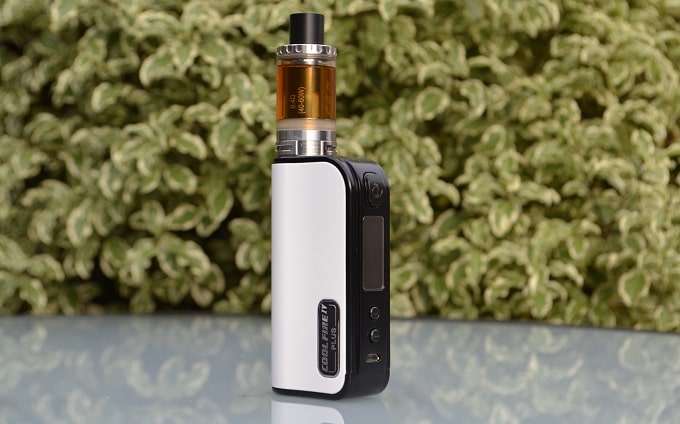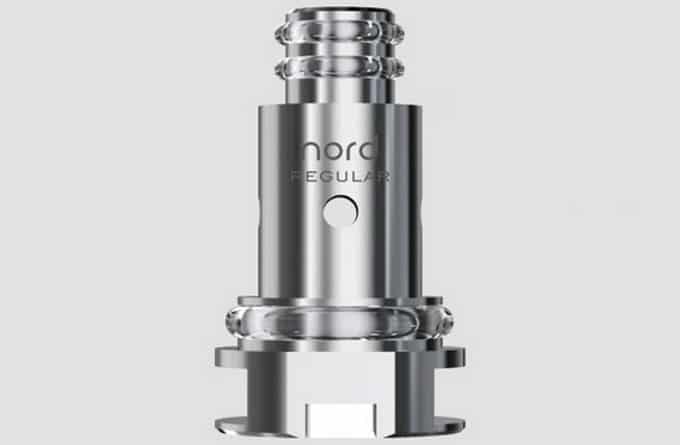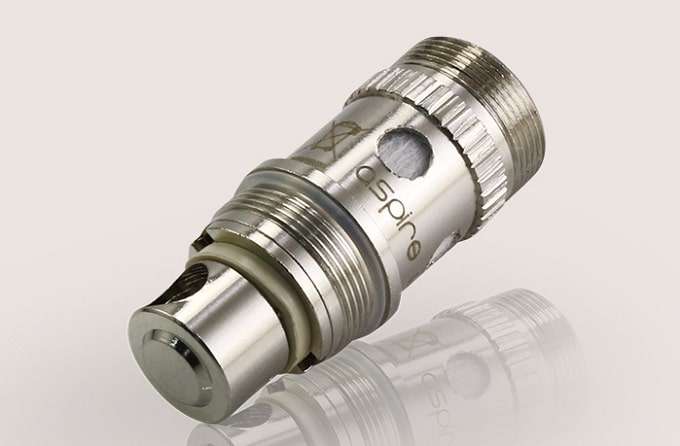The use of vape pens and e-cigarettes has become increasingly popular, especially among young adults. According to a report published by the BBC, “Vaping: How popular are e-cigarettes?“, the number of people using vape pen and e-cigarettes grew from 7 million in 2011 to over 40 million in 2018 and continues to grow1.
The public attention has shifted tremendously from regular smoking to vaping. Why? Simple! As soon as e-smoking was created, the entire media was praising its superiority to cigarettes and cigars.
Cleveland Clinic examined the difference between smoking cigarettes, cigars and vaping. While all three have potential health risks on their users, vaping seems o have the least harmful. Some doctors believe that vaping can help smokers quit smoking. Dr. Prendes advices people to not smoke if they don’t; but, agrees that e-cigarettes pose the lowest health risks in the world of smoking2.
All over the world, people are actually raving about how much better they feel, and how vaping is “safe” compared to smoking cigarettes.
But how safe is vaping? Can you vape CBD Oil? And what’s the best way to do it?
These are three simple questions with very complex answers. The entire medical body is still attempting to give the right answers to these questions.
To address them, it is essential to examine a variety of factors, such as how vaping works, what the risks can be, which devices to choose, and other determinants.
Ultimately, we hope to provide a well-rounded, unbiased analysis of CBD vape pens and vaping oil, as well as the many options (and alternatives) that come with vaping CBD.
What is a vape pen?
For those who have never vaped or smoked cigarettes before, vape pens are the most common option of e-smoking.
They’re compact, simple, and cheap. Many can be picked up at a convenience store or gas station for less than $20.
vape pens vs e-cigarettes
At their core, all e-cigarettes (including vape pens) work the same way.
They consist of a battery, a heating element (atomizer), a coil and a tank. The battery sends power to the atomizer, which then heats the coil.
It generates enough heat to vaporize the liquid or “e-juice” inside the tank into an aerosol, which is then inhaled.
E-cigarettes or “vapes” fall into a number of categories that vary in complexity.
Before we delve into the grittier aspects of general e-cigarette use, let’s take a look at the typical kits that CBD users might choose.
Tube Mods
Tube mods are similar to vape pens (and often named interchangeably), but the batteries are larger and more powerful.
Consequently, the tubes themselves easily dwarf vape pens.
The coils they use are also higher quality and capable of using better e-juices than their cheaper counterparts.
Some of these devices allow users to increase the power (wattage) generated by the battery, giving control over cloud production and flavor intensity.
This is advantageous, since some vape juices fare better at lower wattage and temperature levels, so users don’t always have to crank these up to the highest setting for best results.
Overall, tube mods are an ideal mid-range choice for CBD vapers looking to graduate from vape pens.
They offer the option of sub-ohming for higher quality (and relatively healthier) high VG vape juice, and are just as simple as vape pens while costing only marginally more than vape pens.
CBD Vape Box Mods

Box mods are far more complex than the well-known cylindrical counterparts. These vapes are rectangular, hence their name “box”.
Users can customize the wattage output as well as the temperature, allowing for the best possible experience in terms of flavor and cloud production. Keep in mind that when the wattage is high, it produces more vapor. But, when you are vaping CBD, high wattages will burn the CBD. So, when you are vaping CBD, you should not expect to form big clouds of fumes!
Because of all the additional extras that comes with this “box”, one has to expect that it is the most expensive form of vaporizer.
However, people new to vaping CBD, or vaping in general, probably won’t buy one of these because it may simply be an financial burden for them. For regular smokers who want to move up from pens or tubes, it’s an eventual option. We recommend the Box Mod CBD Vape Kit from our affiliate partner, CBDfx (read our brand review).
Regular vs. Sub-Ohm
Within the different vape categories, we have two types of tanks. Each comes with its own advantages and disadvantages.
But first, what exactly are “ohms”?
Without getting too technical, ohms, in the world of vaping, are the level of electrical resistance belonging to the vaporizer coil.
When vaping, cloud production and flavor vary in intensity, it is all dependent on the amount of energy being sent to the coil.
Ohms are like a bottleneck. They push back, regulating the amount of electricity being fed to the vape.
Higher ohm coils create more resistance, reducing the wattage that reaches the atomizer.
In turn, the liquid vaporizes at a lower temperature, producing less vapor. Lower ohm coils do the opposite.
Coils designed to work at less than 1.0 ohms are considered sub-ohm.
Also, keep in mind that tube and box mods have an ohm range, which can dip below and above the 1.0-ohm mark.
It’s critical to only use coils that fall within these limits.
Regular Ohm Coils

Regular ohm coils are the best for beginners.
You’ll see these type of coils in the cheaper version of vape pens. Some tube vapes and all box mods allow for both regular and sub-ohm coils, provided that you have a sub-ohm compatible tank.
Keep in mind, sub-ohm tanks/mods are still capable of using regular ohm coils, but not the other way around.
So how does this apply to CBD? Well, regular ohm coils don’t receive as much wattage, which means less vapor is produced.
Less vapor means less CBD per “hit,” so you’re getting a much less concentrated vape.
Sub-Ohm Coils

Again, any coil lower than 1.0 ohms is considered a sub-ohm.
People who opt for these types of setups are usually more experienced in the vaping department.
Using a sub-ohm device is great if you want a larger dose of CBD with every puff, but it’s not a perfect system.
The biggest problem with sub-ohm builds is that they use up a lot more liquid. So, it will cost you more vape. Considering how expensive CBD is, you’ll find yourself purchasing it more frequently.
A major advantage, on the other hand, is that sub-ohm tanks are ideally designed to use e-liquids suspended in vegetable glycerin (VG), as opposed to propylene glycol (PG). This makes them inherently safer to use.
What are VG and PG? Let’s cover that next.
What is Propylene Glycol?
Propylene Glycol (PG) is a man-made chemical derived from petroleum. At cooler temperature, PG is stable; but at higher temperatures, like in vaping, it tends to oxidize forming constituents like propinaldehyde, lactic acid, pyruvic acid and acetic acid3. According to the Lung Health Institute, PG is a known irritant to the pulmonary tracts4.
This substance is the most common component used in e-cigarettes today. It forms the base in which flavor additives, CBD, and – in the case of smokers – nicotine, are suspended.
When vaporized, the PG carries its other contents into the user’s mouth and lungs, providing the CBD (or nicotine) “hit.”
PG, however, isn’t “healthy” just because there’s no combustible material involved when smoking it.
According to Dina Maron of Scientific American, the Food and Drug Administration (FDA) considers PG as relatively safe for consumption as a food additive5.
It’s also used in cosmetics and other products; however, there is little research about its effects when inhaled as an aerosol – which is the case with vaporizers.
So is PG dangerous?
Many organizations are trying to find the answer. The problem is that e-cigarettes are new, making long-term studies impossible until a few years from now. Several studies will surface up very soon and clarify more to clarify more about vaping.
A study from the Centers for Disease Control (CDC), however, shows inconclusive results with animal testing6. Researchers exposed mice to high concentrations of PG for extended periods of time to observe the possible negative impacts it could possibly have on the body. Results were inconclusive.
Since people who vape just inhale the PG in short concentrated bursts for a few minutes, researches don’t actually recreate an e-cigarette experience.
So, that leaves PG in the unknown when it comes to health. Until we have solid, long-term, peer-reviewed data, this is an area that so far remains unknown. Sadly, this could be at the cost of public health.
For further information, please refer to the following research reports:
Exposure to electronic cigarette vapors affects pulmonary and systemic expression of circadian molecular clock genes and Toxicology of E-Cigarette Constituents
Allergies from PG
One well-established issue with PG is its potential to cause allergic reactions. Vaping blogs and publications often mention this problem.
Susceptible individuals often feel symptoms ranging from a scratchy throat to sinus problems, headaches, and even feelings of nausea.
In extreme cases, PG can even cause numbness in the face and tongue as well as swelling and redness in these areas.
Expert Opinion on PG AND VAPING SAFETY
Although PG hasn’t received the research it deserves, this doesn’t stop experts like Jahan Marcu (PhD) from giving their input on the topic2.
Marcu warns that, while the long-term effects of PG in vapes are relatively unknown, its presence in ambient air leads to or exacerbates various allergies and skin conditions.
More importantly for this topic, however, is the way propylene glycol behaves in an e-cigarette.
Dr. Marcu explains that “High voltage heat can transform propylene glycol and other vaping additives into carbonyls. Carbonyls are a group of cancer-causing chemicals that includes formaldehyde…[a] group 1 carcinogen.”
Marcu does concede that we have no conclusive proof of cancer being caused by long-term use of vape cartridges or e-cigarettes.
But he states that (like in the case of regular cigarettes during the ‘60s and ‘70s), the health risks might be scientifically proven over time.
Dr. Marcu isn’t the only expert with concerns. Adrian Devitt-Lee, a research associate with Project CBD also warns about the dangers of PG and a close relative, PEG (polyethylene glycol) found in most CBD e-liquids1.
Aside from reiterating the issues mentioned in Marcu’s article, Lee also cites a study that showed PEG heated in a vape pen or other mod generates a comparable amount of “…formaldehyde one inhales when smoking a single tobacco cigarette.”
Lee explains that, since cannabinoids vaporize at less than 230˚C (446˚F), it’s possible to avoid the toxic effects of PG and PEG; however, he warns that “…vaporizers rarely distribute heat evenly. The oil closest to the heating unit often reaches a higher temperature than expected, particularly with vape pens and other handheld electronic vaporizers.”
Last, but not least, we have a study published in the Journal of Alternative and Complementary Medicine, which provided some of the information in Lee’s article. One particularly important fact is that carcinogens and toxic chemicals were found in both PG and PEG, but nothing was mentioned about vegetable glycerin7.
This indicates that, while not necessarily harmless, VG appears to be a better alternative.
Fortunately, vapers can switch to high (or pure) vegetable glycerin e-juices – albeit with the use of a sub-ohm tank.
What is Vegetable Glycerin?
Vegetable glycerin (VG) is essentially the polar opposite of PG.
While PG is artificially created from petroleum, VG comes from plant matter specifically palm, soy, or coconut oil, according to Dr. Edward Group.
Like other vegetable items, it can even be purchased in organic form.
Most importantly for vapers, however, VG is “allergen-free.”
ORGANIC VS. NON-ORGANIC VEGETABLE GLYCERIN
We often hear the word “organic” thrown around these days. A lot of health advocates claim that one is better than the other.
While there are those who either agree or disagree with this assertion, the option for organic VG vape juice exists. Even if the VG used is sourced from organically-grown plants, this doesn’t mean that they’re free of impurities.
After all, this industry is still largely unregulated.
Granted, it’s certainly possible to purchase VG and flavorings that are completely organic.
But you need to be cautious when choosing your supplier. Your best bet is to do your research and, if possible, contact the manufacturer directly.
Many companies now post actual lab analyses (COAs) of their products right on their websites.
In the end, it comes down to two simple words: due diligence. An alternative to buying off-the-shelf products is to make your own vape juice using your own carefully sourced, trusted ingredients and additives.
references
1Devitt-Lee, A. (2017, April 04). Toxic Vape Oil Additives Endanger Patients. Retrieved January 29, 2021, from https://www.projectcbd.org/update-toxic-marijuana-vape-oil-additives-endanger-patients
2Marcu, J., PhD. (2015, July 14). How Safe is Your Vape Pen? Retrieved January 29, 2021, from https://www.projectcbd.org/industry/how-safe-your-vape-pen
3National Center for Biotechnology Information (2021). PubChem Compound Summary for CID 1030, Propylene glycol. Retrieved January 29, 2021 from https://pubchem.ncbi.nlm.nih.gov/compound/Propylene-glycol.
4How Does Vaping Affect Your Health?: Lung Health Institute. (2019, March 13). Retrieved January 29, 2021, from https://lunginstitute.com/blog/how-does-vaping-affect-your-health/
5Maron, D. (2014, May 01). Smoke Screen: Are E-Cigarettes Safe? Retrieved January 29, 2021, from https://www.scientificamerican.com/article/smoke-screen-are-e-cigarettes-safe/
6Propylene Glycol – 2. Health Effects (Rep.). (n.d.). Retrieved January 29, 2021, from https://www.atsdr.cdc.gov/ToxProfiles/tp189-c2.pdf
7Troutt, W., Search for more papers by this author, And, DiDonato, M., Hergert, D., & William D. Troutt and Matthew D. DiDonato. (2017, November 01). Carbonyl Compounds Produced by Vaporizing Cannabis Oil Thinning Agents. Retrieved January 29, 2021, from https://www.liebertpub.com/doi/10.1089/acm.2016.0337



